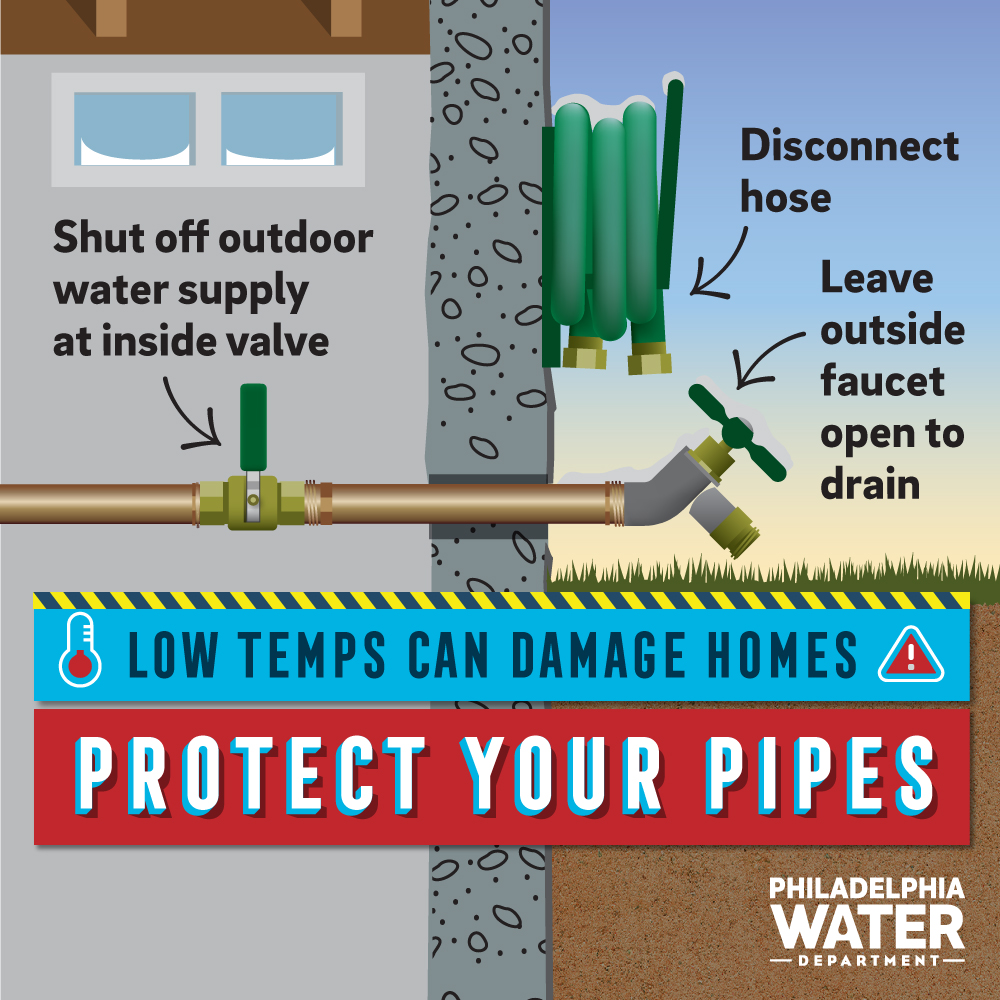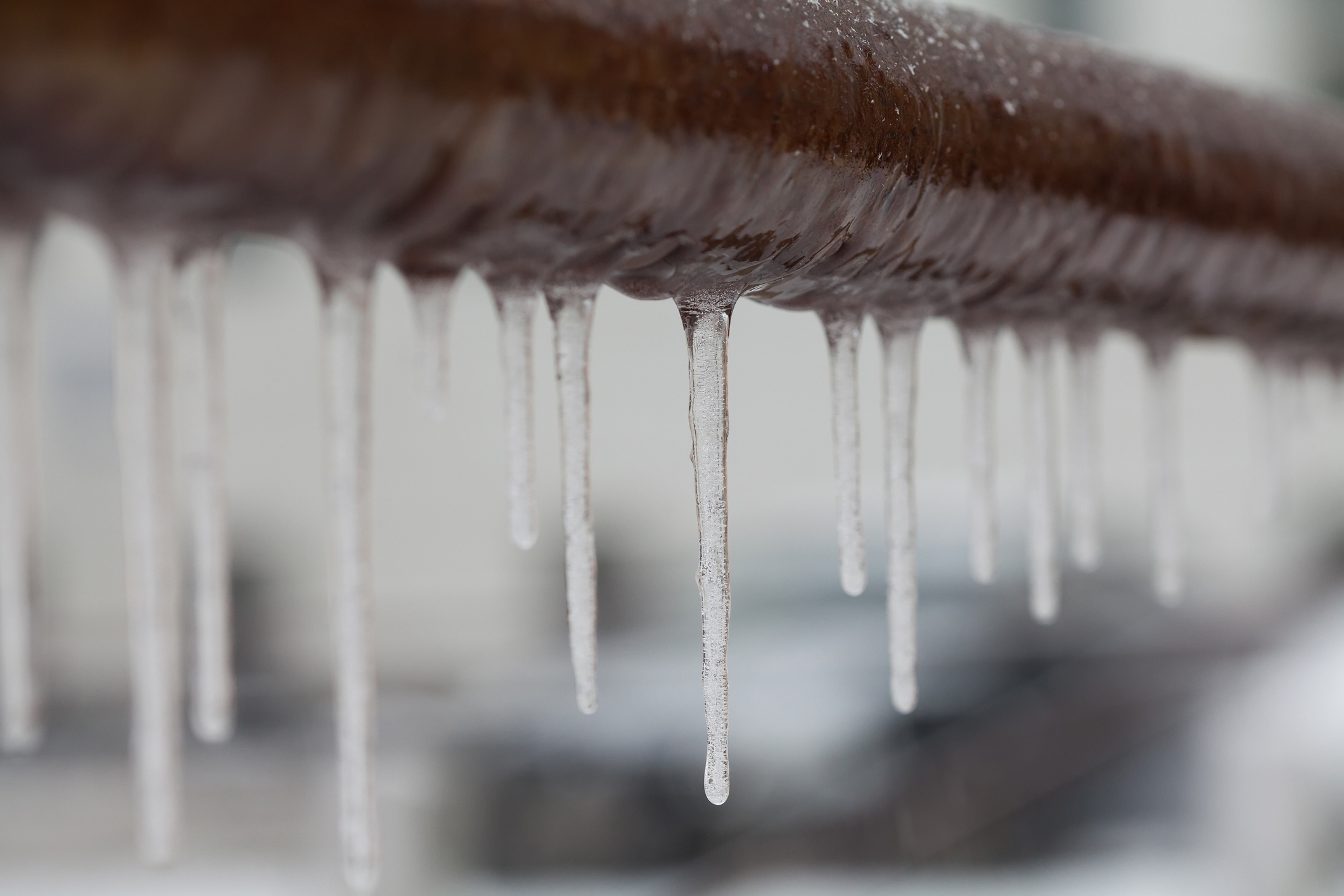The arrival of chilly nights means it’s time to make sure your pipes are protected from cold winter temps that can cause frozen or burst pipes in your home or on your property.
While most plumbing is deep enough underground or insulated well enough within your home to avoid freezing, water meters and water service lines can freeze when the temperature drops below 32 degrees in some cases. This can cause water to stop flowing or pipes to burst. Take steps before winter to protect your pipes: check out our Cold Weather Tips quick-facts here, and get more info in this video:
If your pipes freeze
If you don’t have water during extreme cold, check your pipes before calling our hotline. Many customers mistakenly assume a water main is broken when their home’s pipes freeze and spend valuable time on the phone.
Unfortunately, we cannot thaw your frozen pipes. You may have to wait for the line to thaw or call a plumber. However, if you take the proper precautions and winterize your house, you will likely be able to keep your pipes inside from freezing. Our Cold Weather Tips quick-facts also provide info for dealing with frozen plumbing.
If you’re sure your pipes aren’t frozen and there’s no water on your block/in your home, call our hotline at (215) 685-6300.
FALL TIP: Don’t let the cold sneak up on you!
The first night of very cold temperatures can catch people off guard, and that can leave garden hoses or outside faucets that have been left on vulnerable to freezing and bursting. Often more than a headache and trip to the hardware store for new hose, these mishaps can cause real damage if the water continues to flow after the hose, hose bib or faucet breaks under pressure.
Avoid the risk: Just find the valve or handle that connects your inside plumbing to the outside faucet. It should be close to the spot on your wall where the outside water is accessible.

